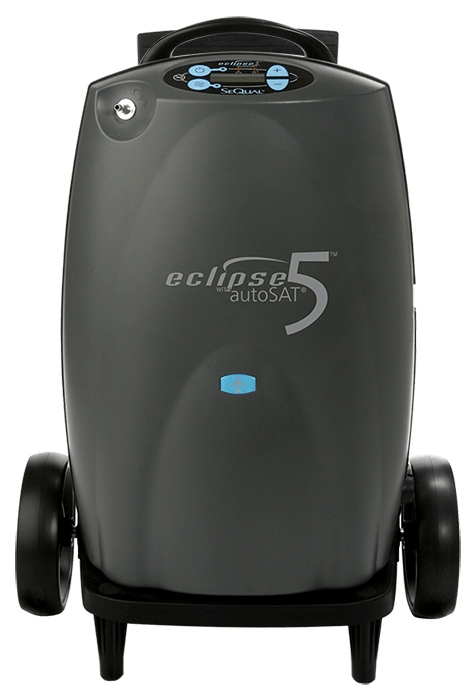
Funding long-term care is a significant financial challenge for many seniors and their families. As health care costs continue to rise, finding the best way to pay for necessary care becomes crucial. One option available to homeowners is to leverage the equity in their homes. Two popular methods for doing this are reverse mortgages and home equity loans. This article will explore these two financial products, examining their features, benefits, drawbacks, and suitability for different care scenarios to help you make an informed decision.
What is a reverse mortgage?
A reverse mortgage is a type of loan available to homeowners aged 62 and older, allowing them to convert part of the equity in their home into cash. Unlike a traditional mortgage, in which the homeowner makes monthly payments to the lender, with a reverse mortgage, the lender makes payments to the homeowner. These payments can be received as a lump sum, fixed monthly payments, or a line of credit, depending on the borrower’s preference.
One key attribute that sets reverse mortgages apart from home equity loans is that no monthly repayment is required as long as one homeowner lives in the home. The loan balance, including interest and fees, is repaid when the homeowner sells the house, moves out permanently, or passes away. This feature can be particularly appealing to retirees who wish to supplement their income without the burden of monthly loan payments. However, it’s important to note that because interest is added to the loan balance each month, the amount owed increases over time, potentially reducing the equity left in the home.
What is a home equity loan?
A home equity loan, on the other hand, is a type of loan in which the borrower uses their home’s equity as collateral. Homeowners can borrow a lump-sum amount based on the equity they have built up in their property. They are required to make fixed monthly payments over a set period, usually five to 15 years. The loan amount and interest rate depend on the homeowner’s creditworthiness and the home’s market value.
Home equity loans are distinct from other types of loans in that they offer a fixed interest rate, providing stability and predictability in monthly payments. This predictability can be beneficial for budgeting and financial planning. Unlike with a reverse mortgage, the borrower must start making repayments immediately, which could be challenging for those on a fixed income. Failure to make these payments can result in foreclosure, posing a risk to the homeowner’s financial security and housing stability.
Benefits and drawbacks of reverse mortgages and home equity loans
When comparing reverse mortgages and home equity loans, it’s essential to weigh the benefits and drawbacks of each.
Benefits of reverse mortgages
- No monthly repayments, which can ease the financial burden on seniors.
- Flexibility in how funds are received and can be used.
Drawbacks of reverse mortgages
- Interest accrues, which increases the loan balance over time and reduces the equity available in the home. This can impact the inheritance left to heirs and may limit future financial options.
- Some entities run reverse mortgage scams, so it’s essential to do your research and get a reverse mortgage through a reputable company.
Benefits of home equity loans
- Lump-sum payments and fixed interest rates make them ideal for those who need a substantial amount of money upfront and prefer predictable monthly payments.
Drawbacks of home equity loans
- Immediate monthly repayments are required, which can be challenging for retirees with limited income.
- Risk of foreclosure if payments are not met, which could jeopardize the homeowner’s financial and housing stability.
Comparing the types of loans
When deciding between a reverse mortgage and a home equity loan, it is essential to compare these financial products based on several factors, including payment structures, impact on homeownership, and suitability for different financial situations.
A reverse mortgage provides flexibility in receiving funds as a lump sum, monthly payments, or a line of credit. This flexibility can be particularly advantageous for retirees who need to manage varying expenses over time. In contrast, a home equity loan provides a one-time lump sum with fixed monthly repayments, which can be ideal for those who need a significant amount of money upfront and prefer predictable expenses.
Another crucial factor to consider is the impact on homeownership and equity. With a reverse mortgage, the homeowner retains ownership of the home, but the loan balance increases over time as interest accrues, potentially reducing the amount of equity available for inheritance. On the other hand, a home equity loan requires the borrower to start making repayments immediately, and failure to do so can result in foreclosure, posing a risk to the homeowner’s financial security and housing stability.
When the goal is to pay for care in a senior living community
If the primary goal is to pay for care in a senior living community, understanding the eligibility requirements and specific conditions for each financial product is crucial.
For a reverse mortgage, a key requirement is that one homeowner continue living in the home as their primary residence. Therefore, the loan will become due if a single homeowner moves permanently to a senior living community. However, there are scenarios in which a reverse mortgage can still be helpful in covering senior living community costs. For instance, for a couple, if one spouse continues to live in the home while the other moves to a senior living community, the reverse mortgage can provide the necessary funds to cover the community fees for the spouse who has moved.
In contrast, a home equity loan provides more straightforward flexibility. The homeowner can use a lump sum to pay for the upfront and ongoing costs of a senior living community without the requirement to continue living in the home. This scenario can be particularly advantageous for individuals or couples who need to move out of their homes entirely. The fixed monthly payments and interest rates of a home equity loan also offer financial predictability, which can help in budgeting for the costs associated with senior living communities.
It is important to note that most of the time, it would make more sense to simply sell your home to finance a senior living community. However, there are a few situations in which taking out a home equity loan to pay for a senior living community might make more sense, such as:
- If you have adult children who are temporarily living with you and you need to keep your home for a short time before selling.
- If you have to use your home as a source of bridge funding while waiting for Social Security, retirement account payments, or some other sort of age- or time-based payout withdrawal eligibility.
- If there is a short-term real estate market drawdown or a catalyst that would cause rapid growth in property value in the short term and you are willing to wait to get the most money for the sale of your home.
Ultimately, while a reverse mortgage has the potential to help fund senior living costs under specific circumstances, it requires careful planning and consideration of residency requirements. A home equity loan, on the other hand, can provide immediate funds without affecting the homeowner’s living arrangements, making it a more straightforward option for those planning to move into a senior living community without selling their home.
When the goal is to pay for care at home
For those who prefer to receive care at home, a reverse mortgage can be an excellent option. The flexibility in receiving funds allows homeowners to manage their finances according to their specific needs. Whether it’s to pay for medical equipment, home modifications, or in-home caregivers, the steady income from a reverse mortgage can help cover ongoing care expenses. Moreover, since no monthly repayments are required, it reduces the financial burden on seniors who wish to stay in their homes.
On the other hand, a home equity loan provides a substantial lump sum that can cover immediate modifications to the home, such as installing ramps, widening doorways, or updating bathrooms for better accessibility. This one-time payment can also cover the initial costs of setting up in-home care services. However, the obligation to make monthly repayments could become a challenge, especially if the homeowner’s income is insufficient to cover these additional expenses alongside their regular living costs.
Considerations for choosing the right loan
When deciding between a reverse mortgage and a home equity loan, several factors must be considered, including the homeowner’s financial situation, health and longevity, home value and equity, and personal preferences.
Assessing current income and expenses is vital to determining which loan type aligns with the homeowner’s financial capabilities. For instance, if a steady income is needed without the burden of monthly repayments, a reverse mortgage might be more suitable.
Health and longevity are also important considerations. If the homeowner expects to need long-term care for an extended period, the flexible income from a reverse mortgage can provide ongoing financial support. Conversely, if the care needed is expected to be temporary or if immediate funds are required for significant home modifications, a home equity loan might be a better choice.
The current market value of the home and the amount of equity available for borrowing are also critical factors. Homeowners with substantial equity might find that either option provides the necessary funds, but those with less equity should carefully consider which loan type maximizes their financial benefit.
Personal preferences play a significant role in the decision-making process. Homeowners who prioritize maintaining homeownership and leaving an inheritance might lean toward a home equity loan despite the monthly repayment obligation. Those who prefer flexibility and the lack of immediate repayment requirements might find a reverse mortgage the better option.
Wrapping it up
Deciding between a reverse mortgage and a home equity loan requires careful consideration of individual financial situations, health status, home equity, and personal preferences. A reverse mortgage offers financial flexibility and eliminates monthly repayments, providing a steady income stream for ongoing care expenses, which is especially beneficial for those wishing to stay in their homes. However, accruing interest can reduce home equity over time. Conversely, a home equity loan provides a substantial lump sum with fixed monthly repayments, ideal for immediate costs like senior living community fees or home modifications. While it offers stability, the obligation to make monthly payments can strain fixed incomes and carries the risk of foreclosure if the borrower misses payments.
When choosing between these options, homeowners should evaluate their current and projected financial needs, the type and duration of care required, and their comfort with debt. A financial advisor can offer personalized advice tailored to specific situations, helping to navigate the complexities and make an informed choice. Ultimately, the goal is to select a financial product that aligns with long-term care goals and overall financial strategy, ensuring peace of mind for the future.








